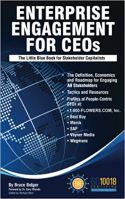TD Bank Exec Says Success Requires Finding Common Ground Between Business and HR
To have any competitive edge, an organization’s talent management strategy must be integrated into its business strategy. Talent management is no longer about the discovery of a valued skill, but instead incorporates people management, enterprise goals, competitive talent infrastructure and optimized performance management. In other words, to get top talent, organizations have to offer a full-packaged deal.
Mar Guerrero-Busquets, Associate Vice President of Employee Experience, Employment Brand and Performance Culture at TD Bank Group, recently spoke about some of the key topics she will discuss at the upcoming Marcus Evans 5th Annual Talent Management Canada, September 23-24, 2015 in Toronto, ON.
Q: At TD Bank, what goes into developing a high-impact talent management framework to transition from traditional talent management?
MGB: Our customer expectations and our competitive landscape are changing. Our business needs to be agile and adapt to this rapidly changing environment and can only succeed if we have the very best people. And TD is in the people business. We are focused on delivering a legendary customer experience. Having the best employees and providing them with an engaging experience directly underpins our ability to deliver a legendary customer experience. This is why, attracting, developing, engaging and retaining the best talent is a top priority across TD.
Not only do we work to effectively integrate traditional processes like recruitment, development, performance management, succession planning, etc, but we also take a holistic approach to talent management and consider other critical factors that can accelerate or hinder the success of our talent management strategy. As an example, we devote time and effort to protect and nurture our organizational culture, which is a major driver of talent attraction and engagement for us.
Q: What do you identify to be integral parts of talent management success?
MGB: If we define talent management as having the right (and engaged) people in the right jobs and doing the right things, there are a number of important elements but I would highlight two in particular:
-
Alignment with the business strategy: What type of talent do we need to deliver our business strategy? Do we understand what attracts them and what keeps them engaged? Are they in jobs that play to their strengths? What are the critical roles in the organization today and in 5 or 10 years' time? Do we have the talent that positions the organization well for the future? Are we developing them as fast as we need to?
-
Leadership capability: Leaders hold the key to success in many aspects of talent management- for instance:
-
Culture: Leaders create the culture of the organization. And culture is to talent what products, services and experiences are to marketing.
-
Development: Great leaders are excellent coaches and have a genuine interest in supporting their people to be the best they can.
-
Engagement: The employee experience is largely driven by the manager. People generally join organizations and leave managers. On the contrary, inspiring leaders drive engagement and retention and a higher level of discretionary effort.
-
Succession planning: High performance is an essential criterion in succession planning. The health of the organizations' future leaders’ pipeline is in part based on leaders accurately assessing and differentiating the performance of their people, which will lead to the identification of high potential employees.
Q: Are there any aspects of talent management in which organizations have habitually under-invested?
MGB: This is an interesting question. For the most part, talent management efforts concentrate on the individual and a crucial aspect that often gets overlooked is the importance of working effectively in teams. Today, the work gets done through collaboration; hence team effectiveness is a main lever of productivity. In addition, team interventions can cause a ripple effect and are a powerful way to shape the culture of the organization or drive change by reinforcing the right behaviors and setting the tone for the entire team. The other aspect that does not tend to be a main focus from a talent management perspective is the creation of an environment, mindset and reward system that fosters creativity and innovation. Diversity and inclusion in the broader sense i.e. diversity of thought (beyond background, ethnicity, LGBT) can foster creativity, but that alone is not enough. New entrants are successfully owning their own space and challenging established companies through leapfrog innovation. Creativity and innovation, not scale or long-standing history, are redefining traditional business models across many industries (banking, transport, tourism…). We need our talent to think outside the box and add value at a much faster pace than in the past.
For more information on the 5th Annual Talent Management Canada 2015 Conference, click here.
 ESM News Alert for the latest news. Subscribe here.
ESM News Alert for the latest news. Subscribe here.
